How to grow flamingo willow on your plot?
A beautiful spreading shrub that can decorate any corner of the garden. This is the basis for the planting of willow "flamingo". Bright color, unusual appearance attracts many gardeners. They use this plant not only as an additional decoration in combination with other shrubs, but also as a single decorative element. Simple maintenance, due to the unpretentiousness of the culture, allows you to get lush bushes from which you can form a hedge.
Willow "Flamingo"
The plant can reach a height of 2.5 m, and the diameter of its crown is 2 m. Young side shoots of red color form a lush, bright crown of a spherical shape. The foliage is pink, with small stripes of white and green clearly visible. Gradually, the elongated leaves change their color to green, while the stripes remain white.
The plant blooms in late spring - early summer. Since the plant is dioecious, it therefore has two types of flowers: male - yellowish catkins - and female - gray catkins. The fruits are small fluffy pods filled with small seeds.
Willow has such characteristics as winter hardiness, frost resistance and wind resistance. Frost and early frost in spring can damage young plants. Therefore, with the likelihood of severe frosts, it is advisable to cover young shoots for the winter to prevent freezing.
Growing conditions
Since an ornamental shrub needs certain conditions for normal growth and development, the Flamingo willow is planted taking into account the following conditions:
- Light - since the willow belongs to light-loving cultures, it needs an abundance of light. Therefore, it is better to plant it in full sun. Will take out shrubs and lightly shaded areas.
- Soil - shrubs grow best on rich, humus soil. It is necessary to plant the crop on light to medium density sandy loam soil. Planting can be done on peaty soils.
- Moisture - willow does not like either excess or lack of moisture. Therefore, it is important to drain the soil before planting to avoid stagnant moisture in the soil. It is also necessary to focus on proper care of the bush - a sufficient amount of moisture in the soil will help it withstand high temperatures well.
Important: The plant can grow in any soil. For better growth and development, it is necessary to maintain sufficient moisture in the soil and air.
This unique willow species can be grown in two ways:
- as an independent bush about 2.5 m high with a crown diameter of up to 2 m;
- by grafting - the maximum length of the plant, as well as the diameter of the crown, does not exceed 1.3 m.
A semblance of a standard plant can be formed from an unvaccinated plant. To do this, it is enough to tie the strongest shoot to the support and cut out the extra branches. However, if such a bush does not withstand the winter frosts well, then its rehabilitation will be difficult. The standard willow is grafted onto another variety. Such plants do not tolerate winter frosts very well. If the bush freezes, you can lose the grafted variety.
Landing
For reproduction, lignified cuttings are used, harvested during pruning before bud break. Almost all of the harvested material gives new plants, which grow up to 90 cm a year. Flowers appear three years after planting.
The bush is planted in early spring and involves the following actions:
- Soaking roots in water for up to 6 hours.
- Preparing the pit for planting - it should be deep enough, about 60x60 cm.
- Laying the bush in a prepared hole, straightening the roots, sprinkling with earth.
Care
Proper care of the flamingo willow stimulates the growth and development of the shrub. It includes the following points:
- Watering
Immediately after planting, the plant must be abundantly moisturized until it takes root. Subsequently, the soil is moistened as needed. Willow requires maintaining the necessary moisture not only in the soil, but also in the air. Therefore, on hot days it must be watered periodically. To increase air humidity, you can do sprinkling of the crown. Willow is able to tolerate temporary excess moisture in the soil. But it does not tolerate drought well.
Tip: To reduce the amount and volume of watering, you can choose a place for planting the plant near the reservoir.
- Top dressing
In early spring, it is necessary to feed the crop with full mineral fertilizer. It is advisable to introduce top dressing after pruning, so that the crown grows faster. For this purpose, you can use the fertilizer "Kemira - universal", which is distributed into the soil during loosening.
- Pruning
Constant pruning in the spring, in which all dead and crooked shoots are removed, allows you to form a beautiful, dense crown.
- Loosening and mulching
The first allows you to increase the access of oxygen to the roots, and the second - to normalize the soil moisture level.
- Fighting disease
These are very rare. With frostbite branches, necrosis may appear by autumn. It is characterized by the appearance of black spots and the coloring of the branches in black. Severely damaged shoots are pruned to a healthy location. The willow is then treated with a fungicide such as Hom or Oxyhom. You can use Bordeaux fluid for this purpose.
Important: It is necessary to periodically inspect the place of the trunk, especially when the foliage dries: cracking of this part can lead to a violation of the water balance of the plant and its death.
In principle, willow is an unpretentious plant, the care of which is not particularly difficult. It is advisable to cover the bush for the winter to prevent the freezing of the shoots. If the plant is a standard plant, then for the winter it is necessary to cover not only the root part, but also the place of inoculation, as well as the crown. The uniqueness of the Flamingo willow lies in the possibility of growing it in two ways: as an independent plant or by grafting on a bole. Care in any case is the same and consists in maintaining optimal soil and air moisture.

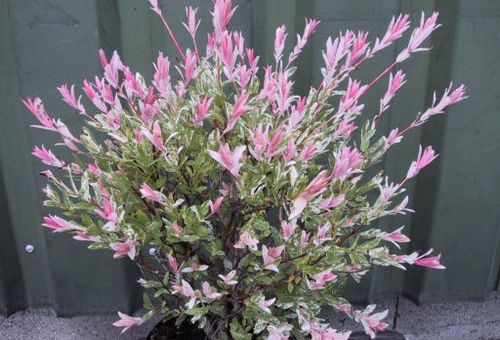
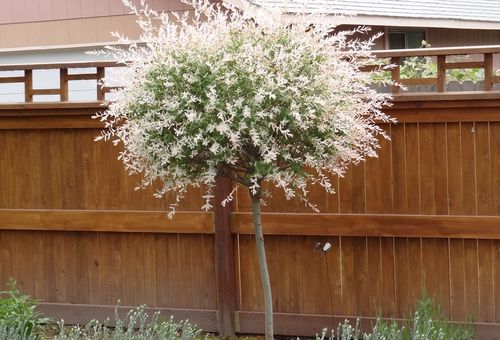
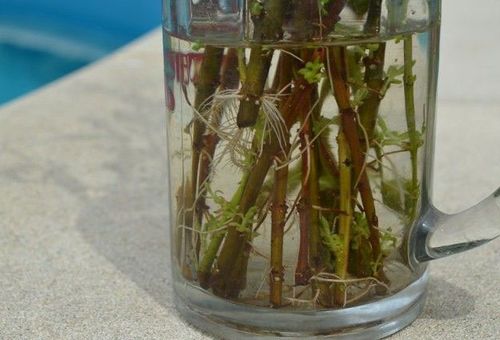
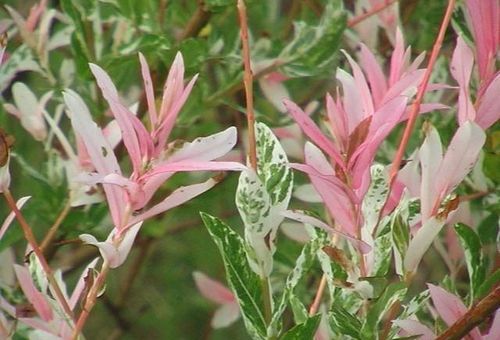
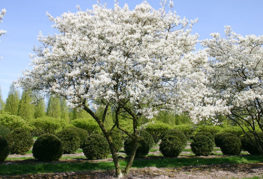

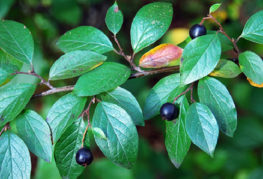
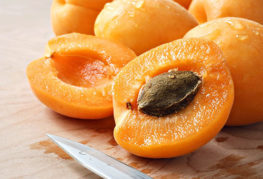

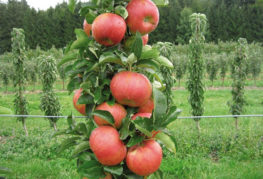
and will be published shortly.